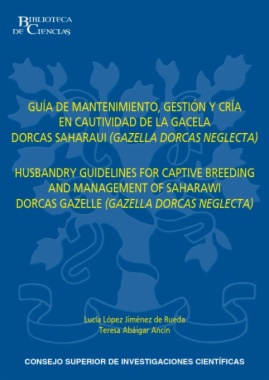

The European Association of Zoo and Aquaria (EAZA) recommends the elaboration of the husbandry guidelines for each endangered species including in a captive breeding program (EEP/EAZA); these guidelines describe the minimum standards housing animals in captivity in zoos and other zoological institutions. Present work describes the husbandry guidelines for keeping Dorcas gazelle (Gazella dorcas neglecta) in optimal conditions of housing, management and health. This book resumes the experience of several Spanish and other European zoos participants in the EEP program of this species. The purpose of this work is a description of the standards for keeping the Dorcas gazelles in captivity; specifically, there is detailed information about diet, enclosures, capture and marking methods as well as the more frequent pathologies in this species.